Miele DA 424 V, DA 420 V User Manual
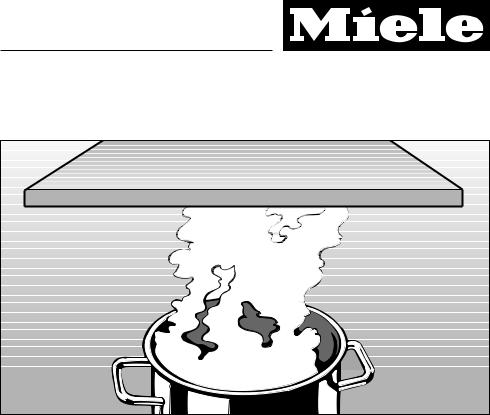
Operating and installation instructions
Cooker hoods
DA 420 V, DA 420 V EXT
DA 424 V, DA 424 V EXT
To avoid the risk of accidents or damage to the appliance it is essential to read these
instructions before it is installed or used for the first time.
GWOZHr
M.-Nr. 06 740 240

Contents
Caring for the environment . . . . . . . . . . . . . . . . . . . . . . . . . . . . . . . . . . . . . . . . . . 3
Warning and Safety instructions . . . . . . . . . . . . . . . . . . . . . . . . . . . . . . . . . . . . . 4
Modes of operation . . . . . . . . . . . . . . . . . . . . . . . . . . . . . . . . . . . . . . . . . . . . . . . . 9
Guide to the appliance . . . . . . . . . . . . . . . . . . . . . . . . . . . . . . . . . . . . . . . . . . . . 10
Use . . . . . . . . . . . . . . . . . . . . . . . . . . . . . . . . . . . . . . . . . . . . . . . . . . . . . . . . . . . . 12 To switch the fan on . . . . . . . . . . . . . . . . . . . . . . . . . . . . . . . . . . . . . . . . . . . . . . . . 12 To select a power level . . . . . . . . . . . . . . . . . . . . . . . . . . . . . . . . . . . . . . . . . . . . . 12 Intensive setting . . . . . . . . . . . . . . . . . . . . . . . . . . . . . . . . . . . . . . . . . . . . . . . . 12 Run-on option . . . . . . . . . . . . . . . . . . . . . . . . . . . . . . . . . . . . . . . . . . . . . . . . . . . . 13 To switch the fan off . . . . . . . . . . . . . . . . . . . . . . . . . . . . . . . . . . . . . . . . . . . . . . . . 13 To switch the lighting on . . . . . . . . . . . . . . . . . . . . . . . . . . . . . . . . . . . . . . . . . . . . 14 Dimming the lighting . . . . . . . . . . . . . . . . . . . . . . . . . . . . . . . . . . . . . . . . . . . . . . . 14 To switch the lighting off. . . . . . . . . . . . . . . . . . . . . . . . . . . . . . . . . . . . . . . . . . . . . 14 Filter operating hours counter . . . . . . . . . . . . . . . . . . . . . . . . . . . . . . . . . . . . . . . . 15 Adjusting the height of the canopy . . . . . . . . . . . . . . . . . . . . . . . . . . . . . . . . . . . . 18
Cleaning and care . . . . . . . . . . . . . . . . . . . . . . . . . . . . . . . . . . . . . . . . . . . . . . . . 19 Housing . . . . . . . . . . . . . . . . . . . . . . . . . . . . . . . . . . . . . . . . . . . . . . . . . . . . . . . . . 19 Grease filters . . . . . . . . . . . . . . . . . . . . . . . . . . . . . . . . . . . . . . . . . . . . . . . . . . . . . 20 Fitting and replacing the charcoal filter . . . . . . . . . . . . . . . . . . . . . . . . . . . . . . . . . 21 Changing a halogen lamp . . . . . . . . . . . . . . . . . . . . . . . . . . . . . . . . . . . . . . . . . . . 23
Appliance dimensions. . . . . . . . . . . . . . . . . . . . . . . . . . . . . . . . . . . . . . . . . . . . . 24 Safety distance between hob and cooker hood (S) . . . . . . . . . . . . . . . . . . . . . 25
Installation . . . . . . . . . . . . . . . . . . . . . . . . . . . . . . . . . . . . . . . . . . . . . . . . . . . . . . 26 Assembly parts . . . . . . . . . . . . . . . . . . . . . . . . . . . . . . . . . . . . . . . . . . . . . . . . . . . 26 Installation instructions . . . . . . . . . . . . . . . . . . . . . . . . . . . . . . . . . . . . . . . . . . . . . 26 Special installation instructions for recirculation mode . . . . . . . . . . . . . . . . . . . . . 26
Electrical connection . . . . . . . . . . . . . . . . . . . . . . . . . . . . . . . . . . . . . . . . . . . . . 27
Operation with Control module DSM 400 . . . . . . . . . . . . . . . . . . . . . . . . . . . . . 28 Connection to a window contact switch . . . . . . . . . . . . . . . . . . . . . . . . . . . . . . 28 Potential free connection . . . . . . . . . . . . . . . . . . . . . . . . . . . . . . . . . . . . . . . . . 28 Connection to a light switch . . . . . . . . . . . . . . . . . . . . . . . . . . . . . . . . . . . . . . . 29
Connection for air extraction . . . . . . . . . . . . . . . . . . . . . . . . . . . . . . . . . . . . . . . 30 Condensate trap . . . . . . . . . . . . . . . . . . . . . . . . . . . . . . . . . . . . . . . . . . . . . . . . . . 31 Silencer . . . . . . . . . . . . . . . . . . . . . . . . . . . . . . . . . . . . . . . . . . . . . . . . . . . . . . . . . 31
After Sales Service . . . . . . . . . . . . . . . . . . . . . . . . . . . . . . . . . . . . . . . . . . . . . . . 32
Technical data . . . . . . . . . . . . . . . . . . . . . . . . . . . . . . . . . . . . . . . . . . . . . . . . . . . 33
2
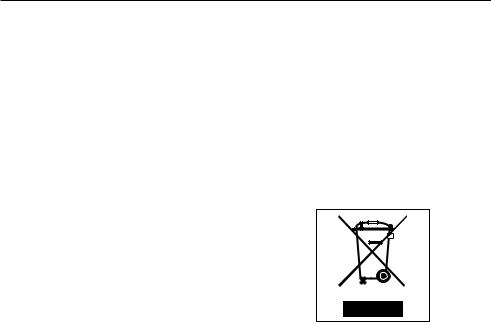
Caring for the environment
Disposal of the packing material
The transport and protective packing has been selected from materials which are environmentally friendly for disposal, and can normally be recycled.
Packaging e.g. cling film, polystyrene and plastic wrappings must be kept out of the reach of babies and young children. Danger of suffocation!
Dispose of or recycle all packaging materials safely as soon as possible.
Disposal of your old appliance
Electrical and electronic appliances often contain materials which, if handled or disposed of incorrectly, could be potentially hazardous to human health and to the environment. They are, however, essential for the correct functioning of your appliance. Please do not therefore dispose of your old appliance with your household waste.
Please dispose of it at your local community waste collection / recycling centre and ensure that it presents no danger to children while being stored for disposal.
It should be unplugged or disconnected from the mains electricity supply by a competent person. If connected by a plug, the plug must be rendered useless and the cable cut off directly behind the appliance to prevent misuse. See the "Warning and Safety" section of this booklet for further details.
3
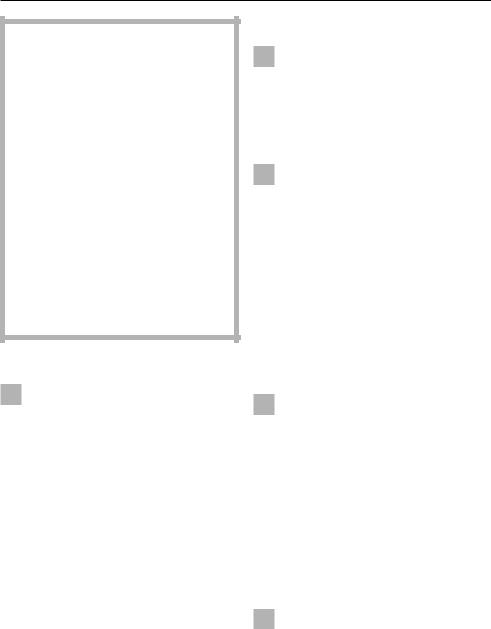
Warning and Safety instructions
This appliance complies with all relevant local and national safety requirements. Inappropriate use can, however, lead to personal injury and damage to property.
To avoid the risk of accidents and damage to the appliance, please read these instructions carefully before using it for the first time. They contain important information on the safety, installation, use and maintenance of the appliance.
Keep these operating instructions in a safe place and ensure that all users are familiar with the contents. Pass them on to any future owner of the appliance.
Correct usage
This appliance is intended for domestic use only.
The manufacturer cannot be held liable for damage caused by improper or incorrect use of the appliance.
Technical safety
Before connecting the appliance to the mains supply, make sure that
the voltage and frequency details given on the data plate correspond with the on-site electricity supply; otherwise the appliance could get damaged. Consult a qualified electrician if in any doubt.
The electrical safety of this appliance can only be guaranteed
when continuity is complete between the appliance and an effective earthing system which complies with local and national safety regulations. It is most important that this basic safety requirement is present and regularly tested, and where there is in any doubt, the household wiring system should be inspected by a qualified electrician. The manufacturer cannot be held liable for the consequences of an inadequate earthing system (e.g. electric shock).
Installation, maintenance and repair work may only be carried out
by a suitably qualified and competent person in accordance with national and local safety regulations. Repairs and other work by unqualified persons could be dangerous. The manufacturer cannot be held liable for unauthorised work.
Ensure that current is not supplied to the appliance until after maintenance or repair work has been carried out.
This equipment may only be used in mobile installations such as
ships, caravans, aircraft etc. if a risk assessment of the installation has been carried out by a suitably qualified engineer.
4

Warning and Safety instructions
The appliance is only completely isolated from the electricity supply
when:
–it is switched off at the isolator,
–it is switched off at the wall socket and the plug withdrawn,
–the fuse from the fused spur connection unit is withdrawn,
–the mains fuse is withdrawn, or
–the screw-out fuse is removed (in countries where this is applicable).
Do not connect the appliance to the mains electricity supply by an
extension lead.
Extension leads do not guarantee the required safety of the appliance (e.g. danger of overheating).
For appliances with an external fan motor fitted (EXT models) the
connection of the two units must be made using the connection cable and the plug connectors.
These models may only be combined with a Miele external motor.
In countries where there are areas which may be subject to infestation
by cockroaches or other vermin, pay particular attention to keeping the appliance and its surroundings in a clean condition at all times. Any damage which may be caused by cockroaches or other vermin will not be covered by the guarantee.
Use
Never use an open flame beneath the cooker hood. To avoid the
danger of fire, do not flambé or grill over an open flame under the cooker hood. When switched on, the cooker hood could draw flames into the filter. Fat particles drawn into the cooker hood present a fire hazard.
When using the cooker hood over a gas hob, ensure that any burners
in use are always covered by a pan; otherwise flames could be drawn up by the suction of the cooker hood, parts of which could then be damaged.
Always switch the cooker hood on when a cooking zone is in use,
otherwise condensation may collect in the hood, which could cause corrosion.
When cooking with oil or fat, chip pans and deep fat fryers etc, do not leave the pans unattended. Never
leave an open grill unattended when grilling. Overheated oil and fat can ignite and could set the cooker hood on fire.
Do not use the cooker hood without the grease filters in place. This way you will avoid the risk of grease and dirt
getting into the appliance and hindering its smooth operation.
The filters should be regularly cleaned or changed as
appropriate. Saturated filters are a fire hazard. See "Cleaning and care".
Do not use a steam-cleaner to clean this appliance. Pressurised
steam could reach the electrical components and cause a short circuit.
5

Warning and Safety instructions
Safety with children
The appliance is only intended for use by adults who have read these
instructions. Keep children well away from the appliance at all times and supervise them when you are using it.
Older children may use the appliance only when its operation
has been clearly explained to them and they are able to use it safely, recognising the dangers of misuse.
Please be aware that on appliances with halogen lighting,
the lamps will get very hot during use and remain hot for some time after switching off. To safeguard against burning, keep children well away from the lamps at all times.
Packaging (e.g. cling film, polystyrene) and plastic wrappings
must be kept out of the reach of babies and young children. Danger of suffocation. Dispose of or recycle all packaging safely as soon as possible.
Installation
Safety regulations prohibit the fitting of a cooker hood over solid
fuel stoves.
The minimum safety distances between the top of a cooker or hob
and the bottom of the cooker hood are as follows, unless a greater distance is specified by the manufacturer of your cooking appliance:
–550 mm above electric hobs and cookers,
–650 mm above gas hobs and cookers,
–650 mm above an open grill or deep fat fryer.
If more than one appliance is fitted beneath the cooker hood and they have different minimum safety distances to the cooker hood, select the greater distance.
If the distance falls below the recommended safety distance when the canopy is lowered, the max. interval it is allowed to be lowered must be re-set during installation. See the installation instructions for further advice.
All ducting, pipework and fittings must be of non-flammable material.
These can be obtained from the Miele Spare Parts department or from builders’ merchants.
The appliance must not be connected to a chimney or vent
flue which is in use. Neither should it be connected to ducting which ventilates rooms with fireplaces.
If exhaust air is to be extracted into a chimney or ventilation duct no
longer used for other purposes, seek professional advice.
6
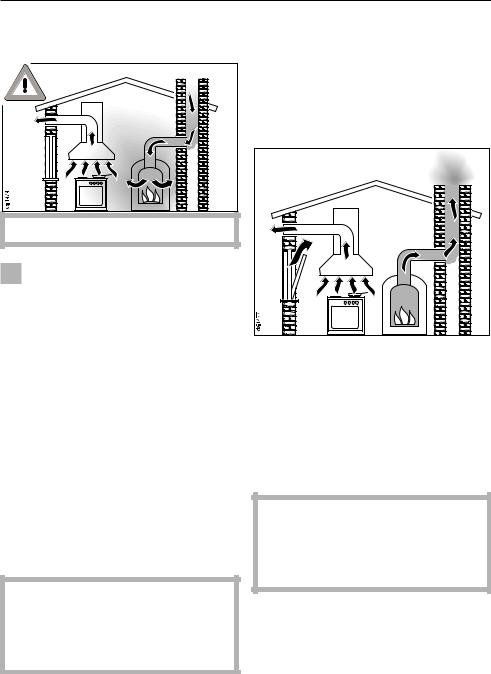
Warning and Safety instructions
Using at the same time as other heating appliances that depend on the air from the room
Warning - danger of toxic fumes
Great care should be taken when using the cooker hood at the same
time and in the same room or area of the house as another heating appliance which depends on the air in the room. Such appliances include gas, oil, wood or coal-fired boilers and heaters, continuous flow or other water heaters, gas hobs, cookers or ovens which draw air in from the room and duct exhaust gases out through a chimney or extraction ducting.
When used in extraction mode, with or without an external motor, the appliance draws air in from the room in which it is installed and from neighbouring rooms. If there is insufficient air, an underpressure will occur. The heating appliance may be starved of oxygen, impairing combustion.
Harmful gases such as carbon monoxide could be drawn out of the chimney or extraction ducting back into the room, with potentially fatal consequences.
In order to ensure safe operation, and to prevent gases given off by the heating appliances from being drawn back into the room when the extractor and the heater are in operation simultaneously, an underpressure in the room of 0.04 mbar (4 pa) is the maximum permissible.
Ventilation can be maintained by air inlets which cannot be blocked, in windows, doors and outside wall vents, or by other technical measures, such as ensuring that the extractor can only be switched on when the heating appliance is switched off or vice-versa. A ventilation brick alone is not generally sufficient to ensure safe ventilation.
The overall ventilation condition of the dwelling must be taken into account. If in any doubt, the advice of a competent builder or, for gas, a "Corgi" installer, must be sought.
7
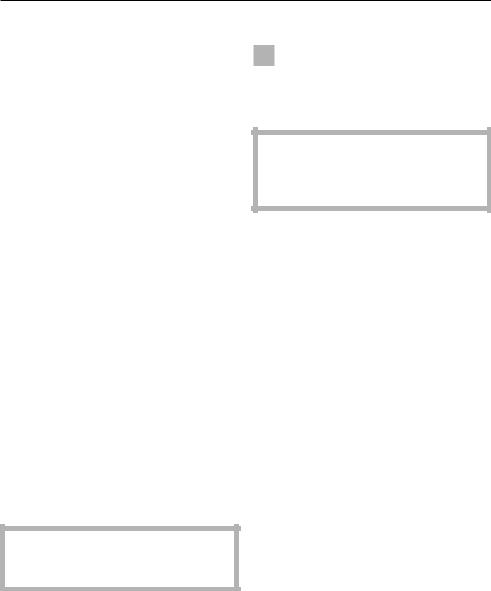
Warning and Safety instructions
One of the following technical measures may be necessary to ensure safe operation.
–If the only way of ensuring adequate ventilation is via an open window, a window contact switch should be fitted to ensure that the cooker hood can only operate when the window is opened sufficiently. A window contact switch kit is available from good builders’ merchants.
Take care when ventilating the room through an open window that ventilation is not impaired by a closed blind or curtain.
–The cooker hood can be set up to automatically switch on an air intake fan or open a motorised inlet flap when it is switched on.
–The cooker hood can be set up to automatically switch off a heating appliance which also depends on the air from the room when it is switched on.
The Miele control module DSM 400 offers the possibility of combining such components with the cooker hood (see "Operation with a control module"). This is available to purchase as an optional extra.
If in any doubt, the advice of a competent builder or, for gas, a "Corgi" installer, must be sought.
If the hood is being operated in recirculation mode, the above restrictions do not apply.
Disposal of your old appliance
Before disposing of your old appliance, first make it unusable.
This should be done by a competent person.
The manufacturer cannot be held liable for damage caused by non-compliance with these Warning and Safety instructions.
8
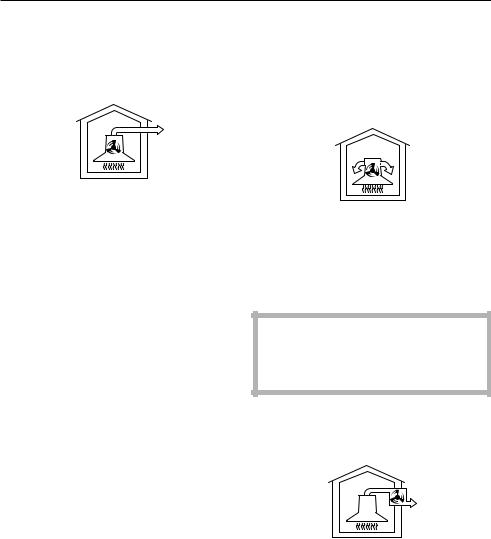
Modes of operation
The cooker hood works with
. . . air extraction:
The air is drawn in, cleaned by the grease filters and directed outside.
The cooker hood is fitted with a non-return flap, which is closed when the cooker hood is switched off. No exchange of room air and outside air can take place. When the cooker hood is switched on, the non-return flap opens for the cooking vapours to be blown directly outside.
. . . air recirculation:
(Applies to the DA 420 V only. A conversion kit and charcoal filter are required, which are available as optional accessories: see "Technical Data")
The air is drawn in and cleaned first by the grease filters and then by a charcoal filter. The cleaned air is then recirculated back into the kitchen through grilles in the top of the cooker hood telescopic tower.
Before using the cooker hood in recirculation mode, ensure that the charcoal filter is in place. See "Cleaning and care".
. . . an external motor:
( ...EXT models only)
EXT models are designed to be connected to an external motor located outside the room.
The external motor is connected to the cooker hood by means of a control cable and is operated by the controls on the cooker hood.
9
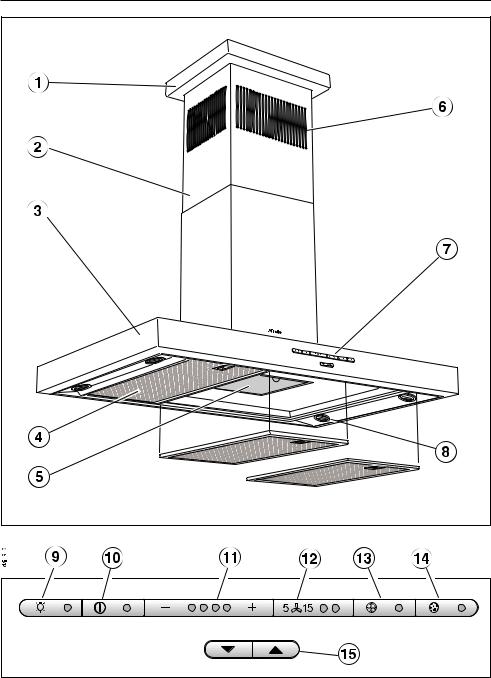
Guide to the appliance
10

Guide to the appliance
aCover plate
bTelescopic tower
cCanopy
The canopy is not designed to be used as a shelf.
dGrease filters
eCharcoal filter
Available as an optional accessory for recirculation mode (DA 420 V only)
fRecirculation grille
(only for recirculation mode on the DA 420 V)
gControls
hHob lighting
iTouch control for hob lighting
This control switches the lighting on and off, and is also a dimmer switch.
jOn/Off touch control for the fan
kControls to select the fan power level
lTouch control for the run-on option
The fan can be set to switch off automatically after either 5 or 15 minutes.
mTouch control for the grease filters
The indicator lamp for the grease filter touch control lights up when the grease filters need to be cleaned.
This control is used to reset the operating hours counter after cleaning the grease filters (see "Cleaning and care").
It can also be used to check and alter the operating hours counter.
nTouch control for the charcoal filter
(DA 420 V only)
The indicator lamp for the charcoal filter touch control lights up when the charcoal filter used in recirculation mode needs to be replaced. For this to happen, the operating hours counter needs to be set before the appliance is used for the first time.
This control is used to reset the operating hours counter after replacing the charcoal filter (see "Cleaning and care").
It can also be used to check and alter the operating hours counter.
oControl for raising and lowering the canopy
The height of the canopy can be adjusted by up to 300 mm in air extraction mode, and by up to 250 mm in recirculation mode.
For further details about the functions of the appliance, see "Use".
11
